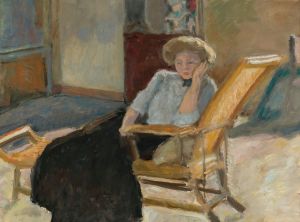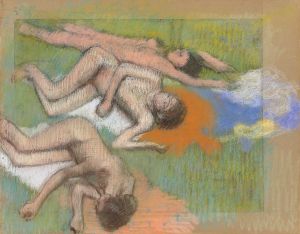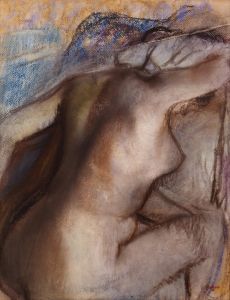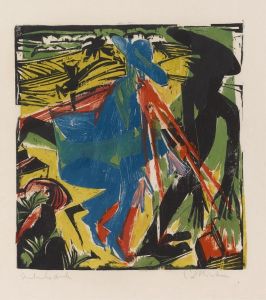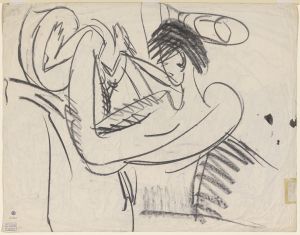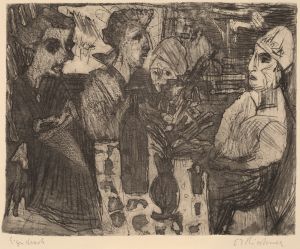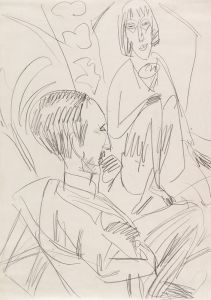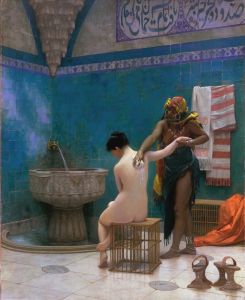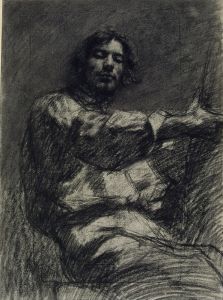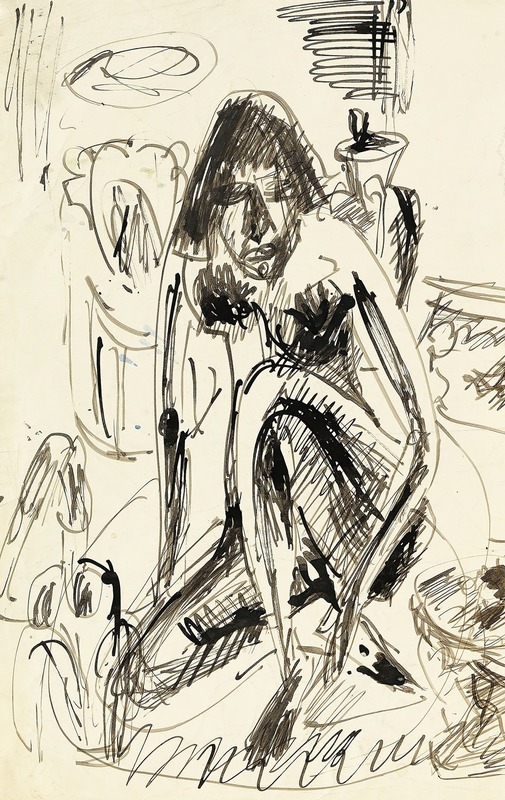
Sitzende Frau im Tub
A hand-painted replica of Ernst Ludwig Kirchner’s masterpiece Sitzende Frau im Tub, meticulously crafted by professional artists to capture the true essence of the original. Each piece is created with museum-quality canvas and rare mineral pigments, carefully painted by experienced artists with delicate brushstrokes and rich, layered colors to perfectly recreate the texture of the original artwork. Unlike machine-printed reproductions, this hand-painted version brings the painting to life, infused with the artist’s emotions and skill in every stroke. Whether for personal collection or home decoration, it instantly elevates the artistic atmosphere of any space.
Ernst Ludwig Kirchner was a prominent German expressionist painter and one of the founding members of the artist group Die Brücke (The Bridge), which played a crucial role in the development of modern art in the early 20th century. Kirchner's work is characterized by its bold use of color, dynamic compositions, and expressive forms, often reflecting the anxieties and tensions of modern life.
"Sitzende Frau im Tub" (Seated Woman in the Tub) is one of Kirchner's notable works, created during a period when he was deeply engaged with the themes of urban life and the human figure. This painting exemplifies Kirchner's distinctive style, which combines elements of primitivism, Fauvism, and German expressionism.
The painting depicts a woman seated in a bathtub, rendered in Kirchner's typical vibrant and exaggerated manner. The figure is outlined with bold, black lines, and the colors are applied in a way that emphasizes the emotional intensity of the scene. The use of non-naturalistic colors and the distortion of the human form are hallmarks of Kirchner's approach, aiming to convey the psychological state of the subject rather than a realistic representation.
Kirchner's interest in the human figure and its expressive potential is evident in "Sitzende Frau im Tub." The painting reflects his fascination with the human body and its ability to communicate complex emotions and states of mind. The intimate setting of the bathtub, a private and personal space, contrasts with the public and often chaotic scenes of urban life that Kirchner frequently depicted.
This work was created during a time when Kirchner was exploring new ways of representing the human form, influenced by his exposure to non-Western art and his desire to break away from traditional academic conventions. The painting's composition and use of color demonstrate Kirchner's innovative approach and his commitment to capturing the essence of his subjects through expressive means.
"Sitzende Frau im Tub" is part of Kirchner's broader body of work that explores themes of modernity, alienation, and the human condition. His paintings often reflect the rapid changes and uncertainties of the early 20th century, and his unique style has had a lasting impact on the development of modern art.
Kirchner's career was marked by both critical acclaim and personal struggles. He faced significant challenges during his lifetime, including mental health issues and the impact of World War I. Despite these difficulties, his work continued to evolve, and he remained a central figure in the expressionist movement until his death in 1938.
Today, Kirchner's paintings, including "Sitzende Frau im Tub," are celebrated for their boldness and emotional depth. They are held in major art collections and museums around the world, where they continue to be studied and appreciated for their contribution to the history of modern art.





